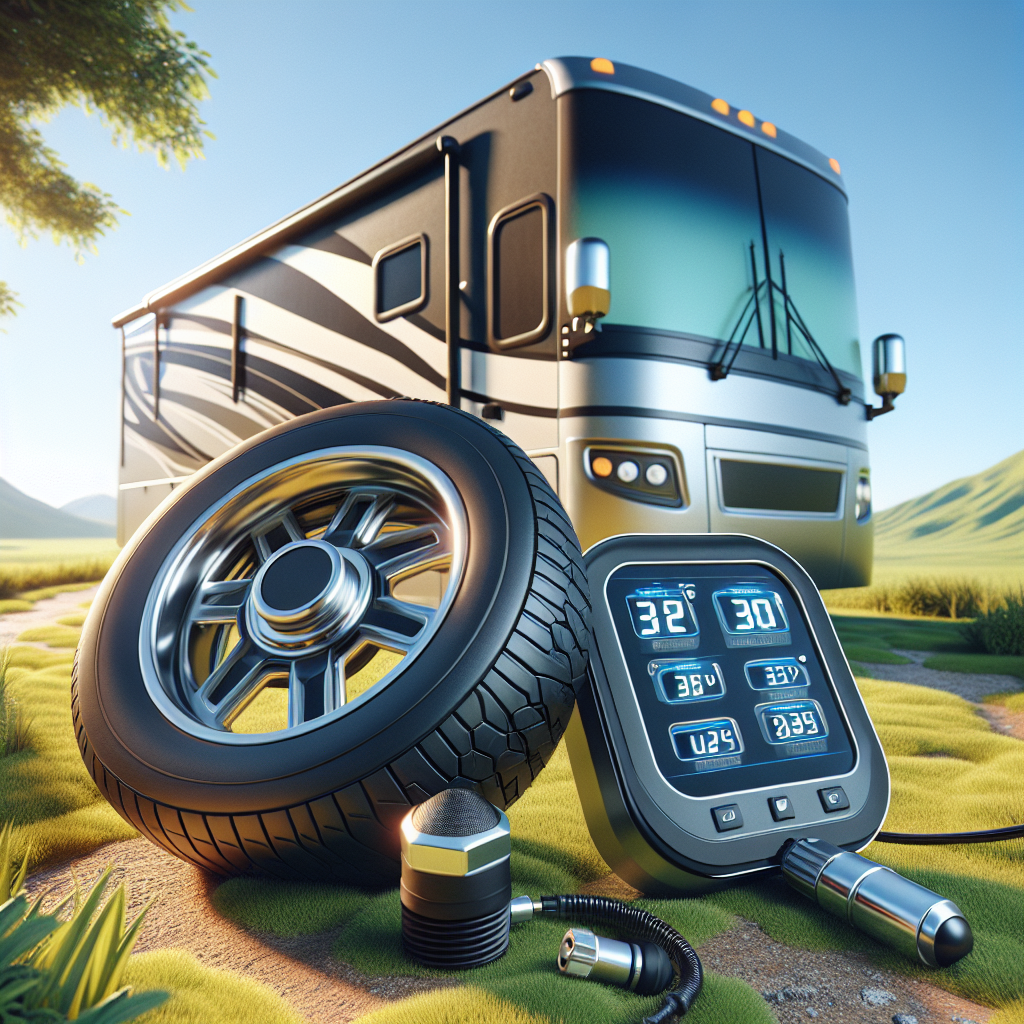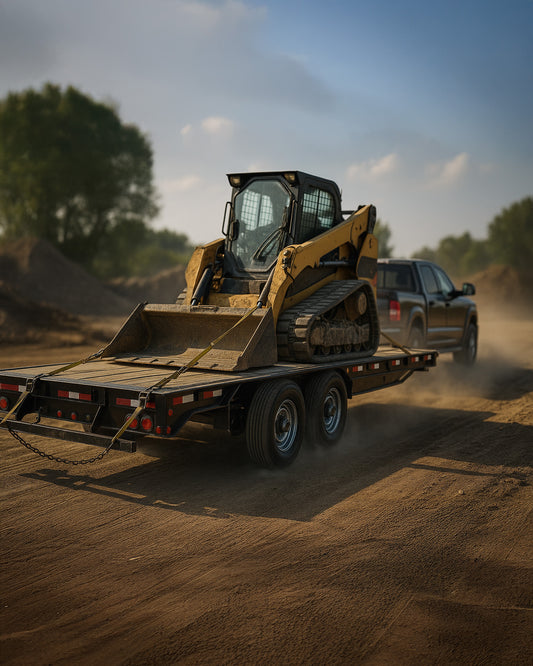

Tire monitoring systems have become an essential component for RV enthusiasts, ensuring the safety and performance of their vehicles. Understanding these systems is key to choosing the right one for your needs. A tire monitoring system provides real-time data on tire pressure and temperature, helping you avoid potential problems before they escalate into serious issues.
These systems typically consist of:
- Pressure Sensors: Installed on each tire, these sensors measure the air pressure and alert you if it falls below a safe threshold.
- Temperature Sensors: Monitoring the temperature of the tires is crucial, as overheating can lead to blowouts.
- Display Unit: This component provides you with real-time information, usually via a dashboard-mounted display or a smartphone app.
With features like alerts for abnormal tire conditions and data logging, tire monitoring systems can help you make informed decisions about maintenance and repairs. Furthermore, some advanced systems can even integrate with other smart technologies in your RV, providing a comprehensive view of your vehicle's performance.
By investing in a reliable tire monitoring system, you can significantly reduce the risk of tire-related incidents during your travels. Tow with peace of mind, knowing that TrailerWatchdog is standing guard. Visit trailerwatchdog.com to learn more about how we can transform your trailer into a smart trailer!
Key Features to Look for in Tire Monitoring Systems
When selecting a tire monitoring system for your RV, it's vital to understand which features will best serve your needs. Here are the key features to look for:
- Real-Time Alerts: A quality system should provide instant notifications for low tire pressure or high temperature, allowing you to react quickly and avoid potential hazards.
- Multi-Tire Monitoring: Ensure the system can monitor all tires, including those on multiple axles, to provide comprehensive coverage.
- Battery Life: Look for systems with long-lasting batteries or the option for hardwired connections, reducing the need for frequent maintenance.
- Ease of Installation: Choose a system that is simple to install and does not require extensive modifications to your RV.
- Mobile App Compatibility: Many modern systems offer smartphone integration, letting you monitor tire conditions from anywhere.
- Data Logging: The ability to log historical data can help you track tire performance over time, assisting in future maintenance decisions.
By focusing on these features, you can select a tire monitoring system that not only meets your immediate needs but also enhances your overall RV experience. This investment not only promotes safety but also contributes to the longevity of your tires, ensuring smoother travels on the road.
Top Tire Monitoring Systems for RVs Reviewed

In the market for tire monitoring systems, several models stand out for their reliability and features. Here are some of the top-rated tire monitoring systems for RVs:
- TPMS by TireMinder: Known for its user-friendly interface, this system provides real-time pressure and temperature readings for up to 10 tires. Its long-range signal ensures consistent monitoring even on longer trips.
- EEZTire Wireless TPMS: This system features a solar-powered sensor option, making it an eco-friendly choice. It offers customizable alerts and is designed to withstand various weather conditions, ensuring durability.
- Flow Through Sensors by Tire-Safe: With easy installation and a robust design, these sensors allow for hassle-free inflation. They provide real-time data and are widely praised for their accuracy.
- iTPMS by Orange Electronics: This system is popular for its ability to monitor up to 22 tires and its compatibility with various RV types. Its mobile app feature enables remote monitoring, making it convenient for RV owners.
- Smart Tire by Smart Tire: This advanced system utilizes Bluetooth technology to offer real-time tire data on your smartphone. Its intuitive interface and comprehensive reporting make it a favorite among tech-savvy users.
Choosing the right tire monitoring system can significantly enhance your RV's safety and performance. Researching each option will help you find a system that fits your specific needs and preferences.
Protect your trailer
Benefits of Using a Tire Monitoring System

Integrating a tire monitoring system into your RV offers a multitude of benefits that can significantly enhance safety and performance. Here are some key advantages:
- Real-time Data: With constant monitoring of tire pressure and temperature, you receive immediate alerts about any irregularities. This allows you to address issues before they escalate into serious problems.
- Increased Safety: Properly inflated tires reduce the risk of blowouts and accidents. By using a monitoring system, you can ensure your tires are always in optimal condition, enhancing the safety of your travels.
- Improved Fuel Efficiency: Maintaining the correct tire pressure can lead to better fuel economy. Under-inflated tires increase rolling resistance, which in turn can decrease your RV’s fuel efficiency. A monitoring system helps keep your tires at the recommended pressure.
- Cost Savings: By preventing blowouts and premature tire wear, a tire monitoring system can save you money in the long run. Regularly monitored tires last longer, reducing the frequency of replacements and repairs.
- Peace of Mind: Knowing that you have a reliable monitoring system in place allows you to focus on enjoying your journey rather than worrying about tire issues. This peace of mind is invaluable for any RV enthusiast.
Incorporating a tire monitoring system is not just an added feature but a crucial element for anyone who frequently travels with an RV. The benefits extend beyond mere convenience and can significantly contribute to a safer and more enjoyable travel experience.
How to Install a Tire Monitoring System

Installing a tire monitoring system in your RV is a straightforward process that can typically be completed in a few simple steps. Here's how to do it:
- Choose the Right System: Start by selecting a tire monitoring system that fits your needs. Consider factors such as the number of tires monitored, wireless capabilities, and compatibility with your RV.
- Preparation: Gather the necessary tools for installation. Most systems come with installation kits that include sensors, a monitor, and wiring. Make sure to read the manufacturer’s instructions thoroughly before beginning.
- Install the Sensors: Begin by installing the tire sensors on each tire. This usually involves removing the valve stem cap and screwing on the sensor. Ensure that the sensors are tightened securely but be careful not to overtighten, which could damage the valve.
- Set Up the Monitor: Next, mount the monitor inside your RV. This is typically done using adhesive or a bracket provided in the installation kit. Ensure the monitor is easily visible from the driver’s seat.
- Connect the System: Follow the instructions to pair the sensors with the monitor. This may involve turning on the monitor and entering specific codes to link it with each tire sensor. Ensure that the monitor receives data from all sensors before proceeding.
- Test the System: Once the installation is complete, perform a test to ensure that the monitor is receiving accurate data from each tire sensor. Check the readings for temperature and pressure to confirm everything is functioning correctly.
By following these steps, you can easily install a tire monitoring system and enjoy the benefits of enhanced safety and performance on your travels. Remember, each system may have its unique features, so always refer to the manufacturer’s instructions for specific details.
Maintaining Your Tire Monitoring System for Longevity

To ensure that your tire monitoring system remains effective and serves you well for years to come, regular maintenance is essential. Here are several key practices to keep in mind:
- Regularly Check Sensor Battery Life: Many tire sensors are powered by batteries that need to be replaced periodically. Check the battery life regularly, especially before long trips, to avoid unexpected failures.
- Inspect for Damage: Periodically inspect the sensors and associated wiring for any signs of wear or damage. Look for cracks, loose connections, or corrosion that could affect functionality.
- Clean the Sensors: Dirt and debris can accumulate on the sensors, potentially interfering with their performance. Gently clean the sensors using a soft cloth to ensure they remain unobstructed.
- Update Firmware: Some advanced tire monitoring systems may require firmware updates to enhance their features or fix bugs. Check with the manufacturer for any available updates and follow their instructions for installation.
- Monitor Performance: Keep an eye on the readings provided by your tire monitoring system. If you notice any inconsistencies or unusual behavior, investigate promptly to prevent potential issues.
By adopting these maintenance practices, you can enhance the longevity and reliability of your tire monitoring system, ensuring that it continues to provide you with crucial data about your RV’s tires.
Tow with peace of mind, knowing that trailerwatchdog is standing guard.




